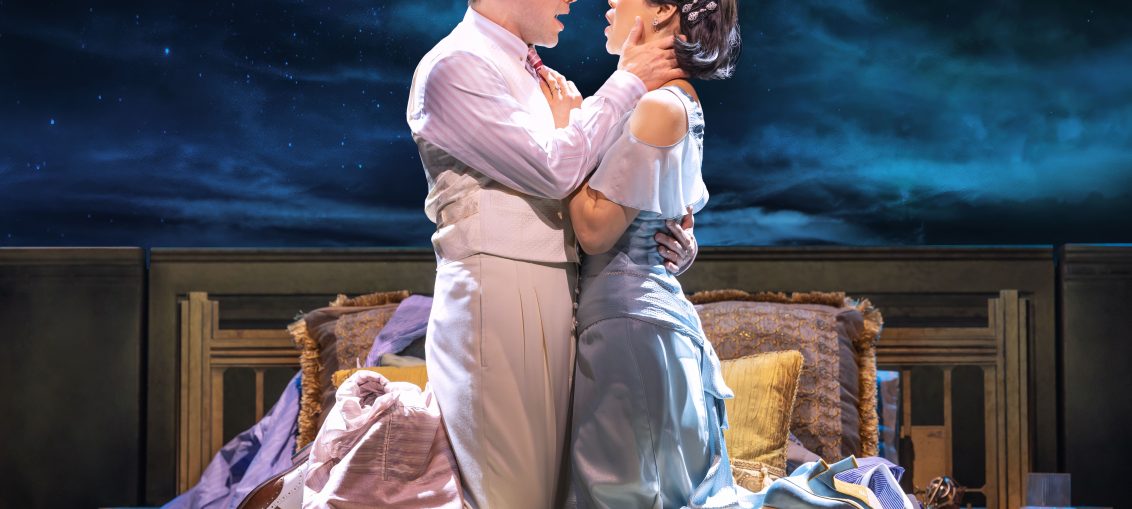
We all knew the musical adaptations of The Great Gatsby would be coming as soon as F. Scott Fitzgerald’s 1925 book entered the public domain, and the first of what will inevitably be many such productions is finally open at the Broadway Theater.
And much like Jay Gatsby’s signature parties, the new musical is very flashy and bright and loud but there’s not an awful lot underneath. Jason Howland and Nathan Tysen’s score is full of bright pop songs that don’t really evoke the 1920s or the wild hedonism of pre-Depression New York. The songs are fine but not terribly memorable, and the lyrics rarely capture Fitzgerald’s voice. Kait Kerrigan’s book fleshes out the characters some, but can only do so much. In presenting a story that criticizes people who prioritize style over substance, the show makes the same mistake in its priorities.
Of course, when the style works, it works very well. Paul Tate DePoo III designed both the sets and the projections to work together fluidly and they’re both gorgeous—possibly one of the best combinations of the two artforms in recent memory. Linda Cho’s costumes are also gorgeous but much like the score, they don’t really evoke the era. Dominique Kelley’s choreography ranges from wild tap routines to elegant ballroom numbers—so the production is definitely easy on the eyes.
The cast does their best under Marc Bruni’s direction. Eva Noblezada once again disappears into her character as Daisy, and I really appreciated how Kerrigan’s book makes the character less flighty and more pragmatic. She recognizes that the world is designed to keep her controlled, and she fights back in the only ways she can while ensuring her survival at the top of the social pyramid. Her scenes with Jordan Baker, played by Samantha Pauly, are especially fascinating as the two women discuss how they see the world and their options within it. Pauly makes Jordan one of the evening’s most compelling characters—someone we think might pop the soap bubble of this gilded age but who ultimately enjoys its perks far too much.
Noah J. Ricketts does a great job conveying Nick Carraway’s awe at the spectacle around him and then his descent into disillusionment as the bubble bursts, and John Zdrojeski is truly frightening as a truly monstrous Tom Buchanan. Sara Chase gives Myrtle Wilson some unexpected depth, and she gets a wonderful moment late in Act II that fleshes out the character more than any other adaptation has done before.
Jeremy Jordan really stands out from the cast, and it’s hard to tell whether this is because Gatsby doesn’t fit into the world of high society or if Bruni just directed Jeremy Jordan like he’s in a different show than everyone else. His performance is fine, but his speech patterns and accent and just about everything else means that he doesn’t fit into the show as a part of the whole, and it’s a disappointment.
And ultimately, the production as a whole feels disappointing. There is plenty to admire in it, especially in terms of visuals, but the show feels emotionally flat. Here’s hoping the next adaptation will be more effective.
 Friday, January 2, 2026
Friday, January 2, 2026